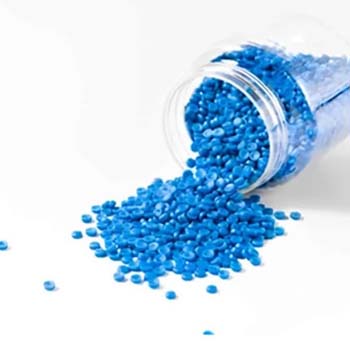TPR is short of Thermoplastic Rubber, it is a semi-crystalline blend of polymers , merge the strength and flexibility of both rubber-like and thermoplastic properties . but It merge the most excellent qualities of rubbery elasticity with the ease of plastic processing.
With its elasticity and rubber-like material, TPR effectively disperses impact energy away from the bone, which reduce the force of the impact.
TPR material is specially designed to combine the best characteristics of these two mateiral. It behaves like rubber and widely used in industries requiring flexible yet durable component due to its flexibility , elasticity and versatility. This makes it a cost-effective, recyclable, and high-performance material for many applications.
Key Features of TPR
The properties of thermoplastic rubber are comparable to those of vulcanized rubber as well as thermoplastics. Here are some special feature as follows:
* Elasticity and Flexibility: TPR Offers excellent elongation and resilience, similar to natural rubber, it feels and functions like vulcanized rubber, ideal for soft-touch products.
* Processability: It can be melted, shaped, and cooled like standard thermoplastics, enabling efficient mass production.
* Recyclability: Unlike traditional rubber, TPR can be reheated and remolded, reducing material waste.
* Chemical Resistance: It shows good resistance to chemicals, weathering, and UV exposure.
* Temperature Resistance: TPR performs well in both hot and cold environments ,thus it works well in a wide range of temperatures.
* Durability: Resistant to wear, abrasion, and weathering, ensuring long-lasting performance.
* Non-toxic and Safe: Frequently used in food-grade and medical applications due to its safety profile.
Why Choose TPR?
For manufacturers and product designers, TPR offers a balance of flexibility, durability, and ease of processing.
The key properties of thermoplastic rubber include excellent fatigue resistance, chemical resistance, impact resistance, and high recyclability.
Whether you’re looking to improve comfort in consumer products or enhance safety in industrial parts, TPR is a smart material choice.
Here , we simply talk some special advatage TPR as follows:
* Ease of Processing: Can be shaped using standard plastic molding techniques, reducing production time and cost.
* Customization: Available in a wide range of hardness levels, colors, and finishes to meet specific design requirements.
* Cost-Effective: Its reusability and ease of manufacturing lower overall costs.
* Sustainability: Recyclable properties align with increasing environmental regulations and consumer demand for sustainable products.
Wide Applications
TPR is primarily used for applications in which flexibility, toughness, and grip are important. TPR’s versatility makes it invaluable in various industries, here are some example as follows:
* Footwear soles (grip and comfort)
* Toys and consumer goods
* Seals, gaskets, and tubing
* Soft-touch grips (on tools, toothbrushes, etc.)
* Medical and laboratory components
* Healthcare and Medical
Medical Tubing and Seals: Non-toxic and flexible, making it suitable for critical applications.
Orthopedic Products: Used in braces and supports due to its cushioning properties.
* Automotive Industry
Seals and Gaskets: Provides elasticity and durability for weather seals and under-the-hood components.
Interior Components: Used in dashboards, armrests, and mats for its soft-touch properties and resistance to wear.
If you want to process and knead TPR ,TPE,Rubber ,Silicone ,PVC and other material, welcome to contact us . We ,here are very pleased to help you .







